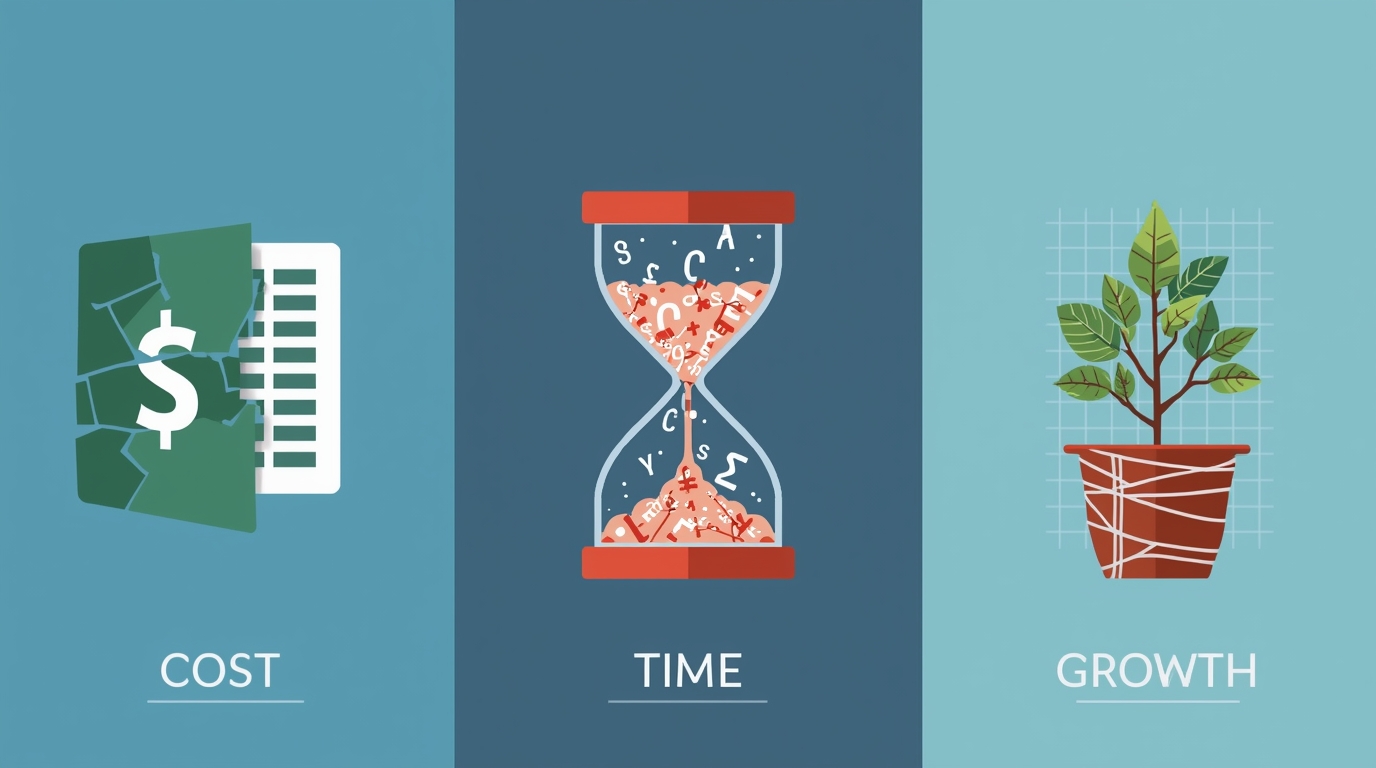As part of our research, we are checking the websites of different translation companies and contacting LSPs to discover if they are using any translation business management (TBMS) systems. And it appears that a great part of companies either do not use any TBMS or does not even know what it is. Why is that? We will look into possible explanation.
What the heck is TBMS?

That’s very likely a question that comes to the mind of many small LSP leaders when we ask them if they are using any TBMS. Often, their initial reaction to such an email inquiry is to simply ignore and discard it. In scenarios where ignoring isn't an option, such as during a direct, face-to-face conversation, their responses tend to be vague. They might acknowledge using "software tools," but often refer to systems with entirely different functions. For instance, some mention CAT (Computer-Assisted Translation) tools and TMS (Translation Management Systems) like Smartcat, Trados, and MemoQ. Others cite CRM (Customer Relationship Management) systems like Zoho, Salesforce, or Hubspot, and there are even those who bring up accounting systems like Quickbooks. However, it's crucial to understand that translation business management encompasses much more. It's not just about any software; it's about a tool designed to manage the entire spectrum of processes within a linguistic services providing enterprise.
The primary functionalities of TBMS encompass several key areas integral to the management of translation companies. These include Project Management, Client Management, Vendor Management, Workflow Automation, Financial Management, Sales Management, and Quality Control. Tailored specifically for the unique needs of translation companies, these systems offer a comprehensive solution for overseeing the various facets of a language services business.
In contrast, CRM (Customer Relationship Management) systems are predominantly centered around sales activities, focusing on client relationships and sales processes rather than the broader spectrum of business operations. Similarly, CAT (Computer-Assisted Translation) tools and TMS (Translation Management Systems) are primarily geared towards facilitating the translation process itself. They focus on aiding translators and managing translation workflows, but do not cover the extensive business management aspects that TBMS are designed to handle. This distinction is critical in understanding why TBMS are the more suitable choice for managing the complexities and varied needs of a translation business.
Habits…

Adapting to change can be a challenging endeavor, particularly in the translation industry. For many CEOs of translation companies, there's a natural inclination to stick with existing tools and processes, especially if they have been functioning effectively for years. This mindset often manifests in thoughts like, 'We’ve been working like this for many years, so why should I change?' However, it's crucial to consider that while internal processes might remain constant, the external world does not. The business environment, including the translation sector, is always evolving. Competitors, potentially armed with more advanced and efficient tools, could encroach on what was once considered a secure and isolated niche. Therefore, staying abreast of new developments and being open to adopting innovative solutions like TBMS (Translation Business Management Systems) isn’t just about keeping pace; it's about securing a competitive edge and future-proofing the business in an ever-changing landscape.
But even when consciously you understand that the new software may improve your efficiency greatly and give competitive advantages, and make you more cost-effective and scalable, still the habit holds you. It’s much like those “New Year resolutions” that mostly do not get achieved, and put on the shelf till you “have time”, and no other “higher priority affair”. In our practice with translation companies, we’ve seen many procrastinations, e.g. the one-month trial was never tested until the 3 days before expiry.
If you find yourself in this situation, resisting the adoption of beneficial new software like a TBMS, there are strategies you can employ to overcome this inertia. Consider actions that 'burn the bridges' behind you, compelling you to move forward. For example, make a commitment to your team that puts your reputation on the line, thereby creating a personal obligation to follow through. Another approach is to invest financially in the license. This investment can serve as a motivator to utilize the software effectively to ensure a return on that investment. Alternatively, delegating the implementation process to a capable team member who excels in such tasks can also be effective. This approach leverages their strengths and can ease the transition for the rest of the team.
The key is to actively confront the internal conflict between recognizing the value of new software and the reluctance to undergo the implementation process. By taking decisive actions that create a sense of commitment or urgency, you can break the cycle of procrastination and pave the way for significant improvements in efficiency and competitiveness.
Another specific case of habits is a situation when a LSP is using some non-specialized tool like CRM, and then tests TBMS, and tries to use TBMS as CRM, completely ignoring other functions of the system. Of course in that case you won’t like TBMS, as it has less CRM features. It’s like buying a car, and use it as a carriage for horses, of course normal carriage is better if you still use horses. So you ought to have open mind if you want to use it effectively.
Money…

Concerns about the costs of licenses for a Translation Business Management System (TBMS) may initially deter LSPs from adopting such systems. This hesitation, however, overlooks the primary purpose of a TBMS: to reduce the number of hours your team spends on management tasks, thereby cutting down on salary-related expenses.
To put this into perspective, consider a simple calculation: divide the monthly license cost of the TBMS by the hourly salary of your management staff. For instance, if the license costs €70 per month and you're paying an hourly rate of €30 (this is a hypothetical figure for illustration), the system becomes cost-effective if it saves just 2.5 hours per employee each month. In reality, a fully utilized TBMS is likely to save significantly more time.
Moreover, it's not just about saving the time of your staff; it's also about the valuable time of the CEO. A TBMS provides a comprehensive overview of the company's operations, generates detailed reports, and streamlines decision-making processes. By investing in a TBMS, you're not just paying for a software license; you're investing in a tool that can enhance the overall efficiency and productivity of your business, especially at the management level.
Looking for the perfect match…

Every Language service provider (LSP) company is unique, and if you did not make its processes strictly according to some MBA course instructions, you’ve probably invented your own bicycle. You have some “special” clients that want you do the job only in the way they want, you may have some unique corporate culture ranging from family-like team to strict hierarchy system, you may have some specific market and work within some jurisdiction that demands you to do things no one else in the world does.
It all makes your internal processes unique, ant in attempt to automate them, no TBMS system will be 100% match. Some features will be redundant; some will be missing. And it’s the hard truth about matching LSP with TBMS. But here is a simple rule: find the one that suits better than other. If a TBMS automates 80% of your processes, that means you have only 20% of them left not automated, and that’s a great relief already. You may think about the remaining part later.
Summary
So that being said, remember a few things:
- Learn about new technologies, TBMS included. The fact that you could run your business without this knowledge does not mean you may still be competitive tomorrow.
- If you have understanding that TBMS will help your business, but struggle to overcome your habits and habits of your team, you have to make a push to get out of this vicious circle. You know yourself better, so use the trick that works.
- Every expense in business should be considered as investment, so when thinking if TBMS worth its money, try to figure out how much time working hours it saves, including your own hours.
- Find the most suitable Translation business management system, do not search perfect match. It will help with 80% problems, and you’ll have to deal with 20% only.

.png)
.png)


